A retro handheld with a price tag of $10 – $20 that can emulate up to- and including GBA/SNES? – Sure, I’ll take one!
It’s no wonder the Data Frog SF2000 has generated a lot of buzz over the past months. This dirt cheap emulating device has quickly gathered the retro gaming community’s attention. How good can a device within the same price range as a fast food meal actually be?
Let’s find out.
Table of Contents
Introduction
To make things clear: despite this thing being cheap, it’s not one of those 400-in-1 retro gaming handhelds.
The Data Frog SF2000 can actually run real games and includes emulators for NES, SNES, MD, GB, GBC, GBA and MAME. Not all of them runs in full speed, but it’s still very impressive for a device this cheap. And with all the interest, who knows what sorcery the community can come up with to improve it further.
It’s worth noting that throughout this review you’ll have to always keep the price point of this device in mind. This is far from a premium device but when you consider what it’s capable of versus what you’re paying – you’ll be surprised.
Taking inspiration from the design of the classic SNES-controller, it’s also appealing and scratches that retro feeling itch when holding it in your hands.
Speaking of hardware, let’s move on.
Hardware
My first impressions are that the SF2000 feels cheap but at the same time sturdy. You can tell the plastic is of poor quality and there’s a lot of rattling when shaking the device. Every button except for start and select are a bit loose.
Despite this, the device feels quite solid and I get the impression it would be able to handle a few drops, which is a good thing.
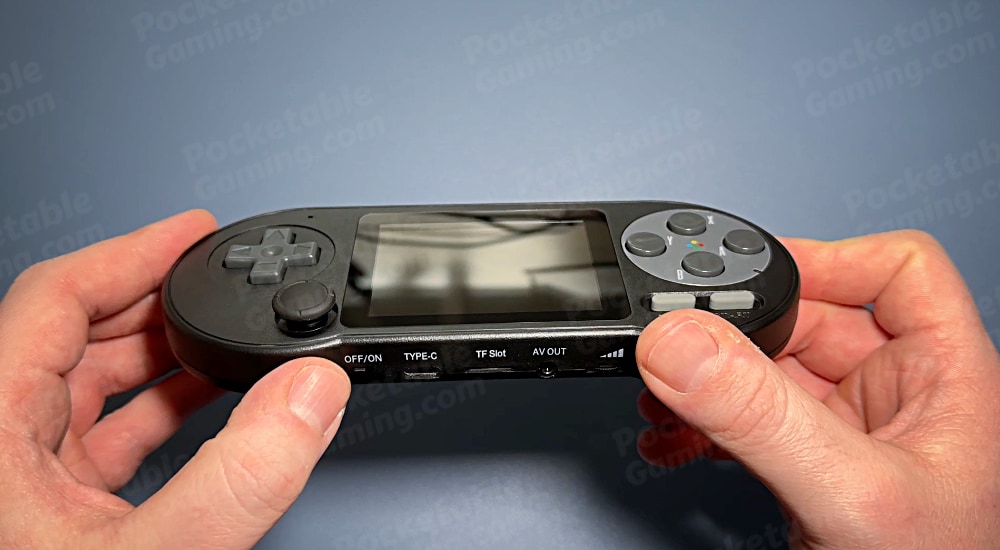
The buttons are pretty good considering the price. I especially like the face buttons which, for me, are better than they have any right to be. However, the mushy D-pad feels cheap and the analogue stick will probably do its job but nothing more. The placement of the analogue stick is also rather awkward being that close to the screen. The shoulder buttons are very clicky and finally we have the start- and select buttons which are made out of rubber.
Overall, I must say I’m impressed with the build quality as it’s better than I had anticipated.
When it comes to design, it’s apparent that Data Frog tried to mimic the SNES-controller with the SF2000.
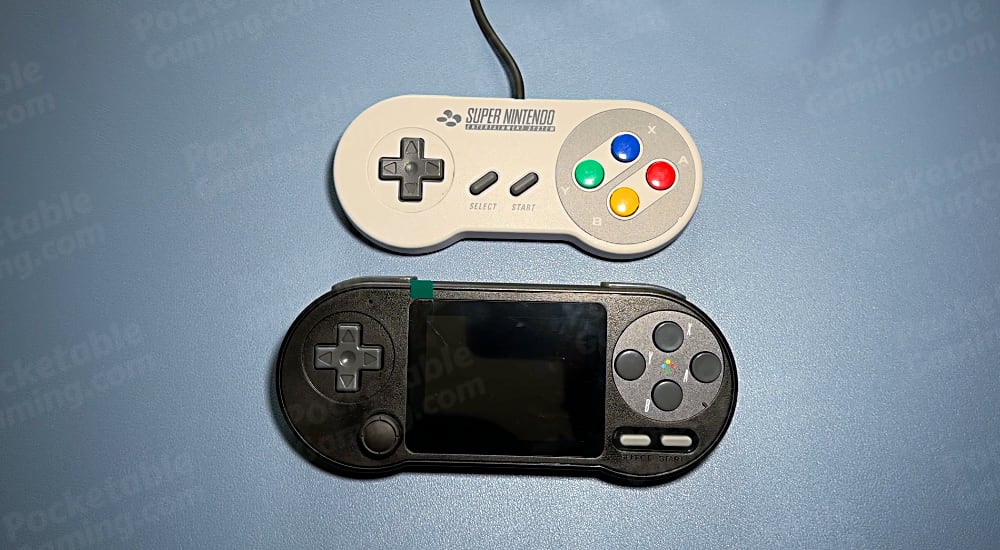
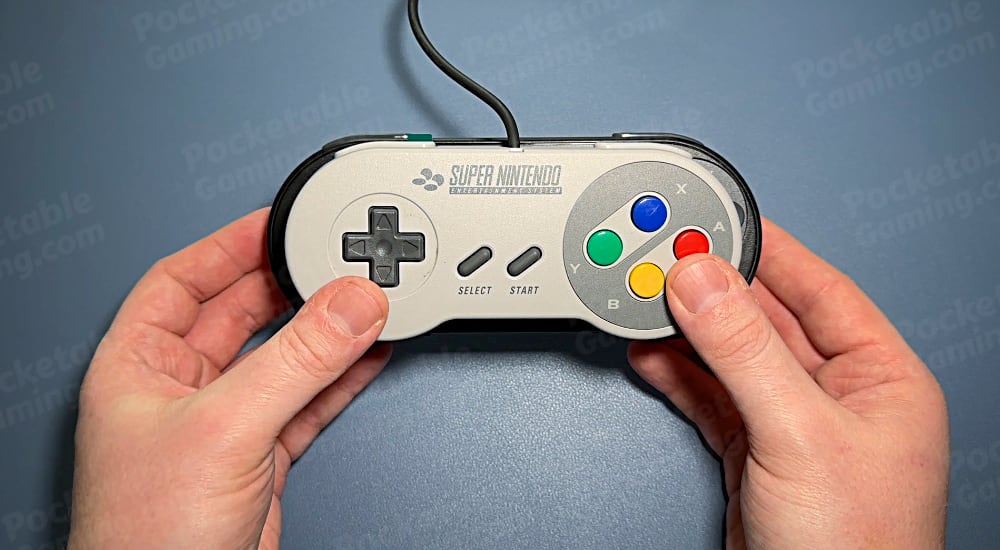
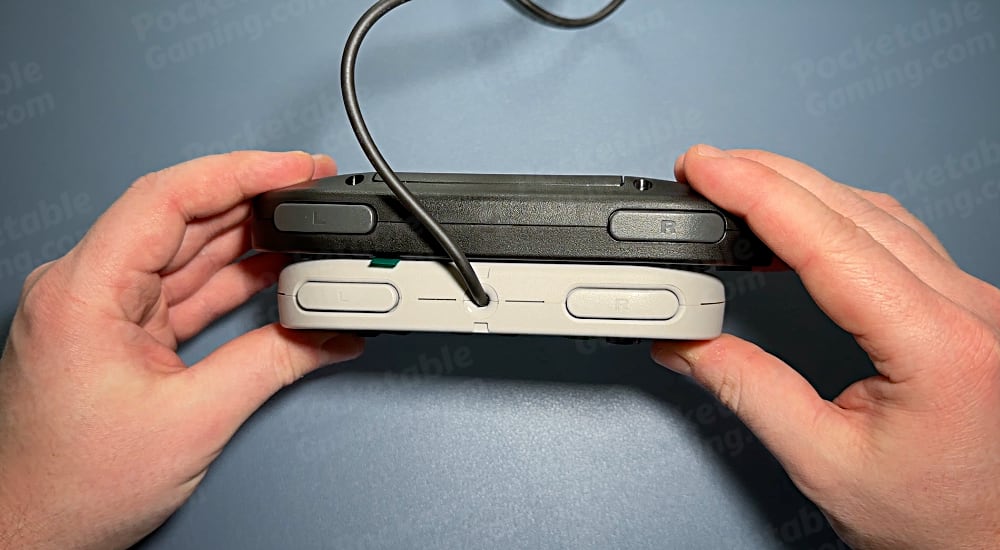
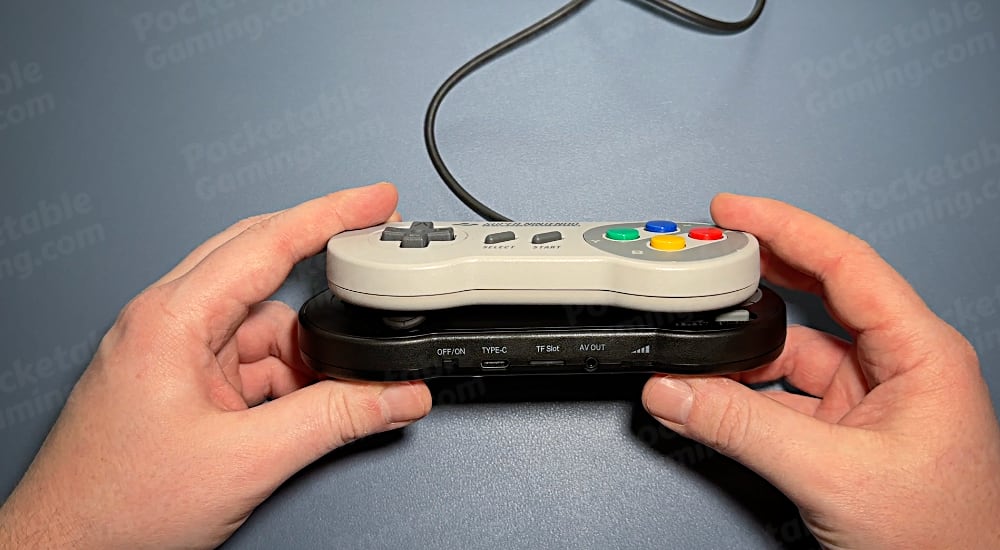
The classic horizontal design of the SNES-controller is well proven and I can easily see myself playing for a while without cramping. The SF2000 being a bit bigger is also a plus as I feel it’s more ergonomic. Furthermore, it does a really good job having that nostalgic retro feel to it.
Next up a quick size comparison to a similar, albeit quite a lot more powerful retro handheld, the Anbernic RG353PS:
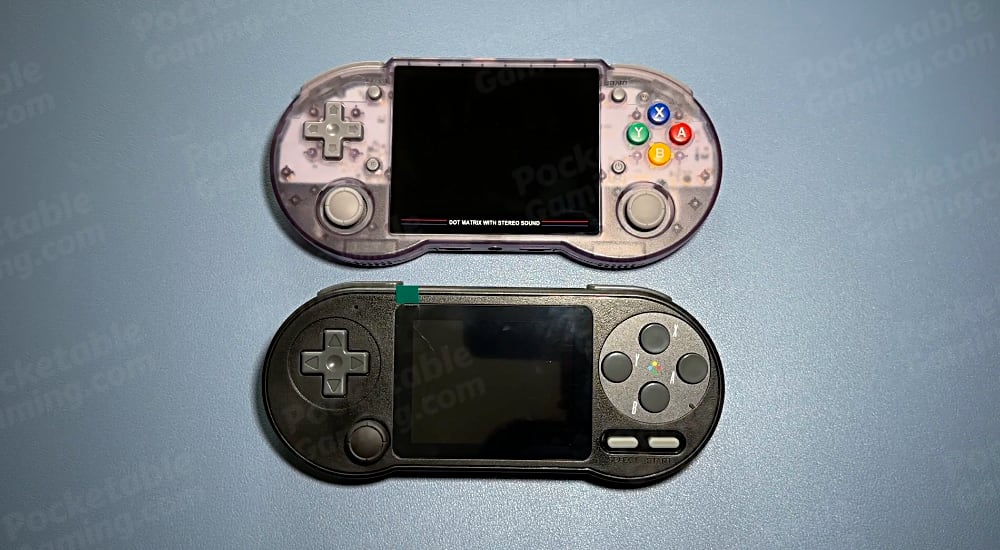
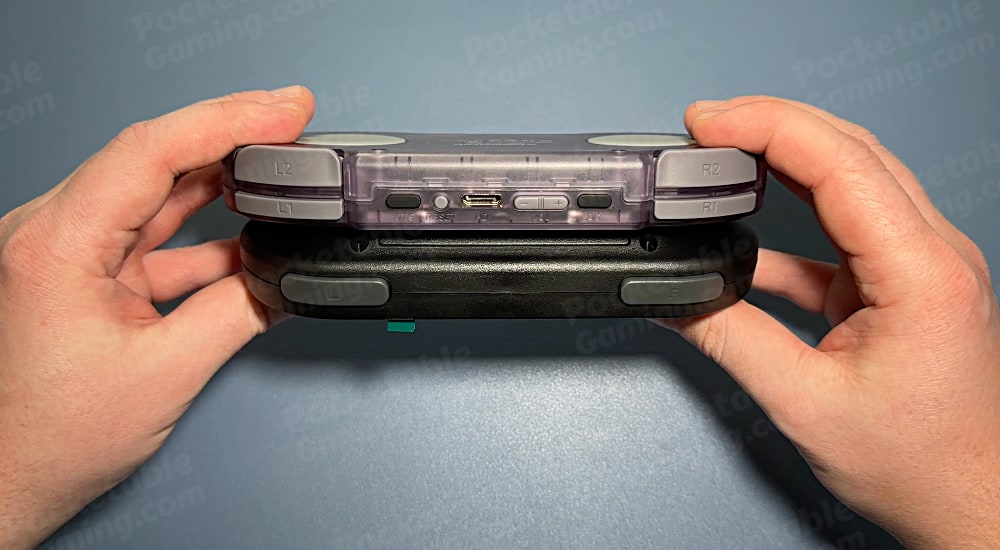
Despite both of these devices being about the same size, there are a lot of differences – it’s night and day really. The Anbernic RG353PS is better across the board: build quality, hardware, buttons, screen, software and pretty much everything else.
To be honest, it’s not actually fair to compare these units except for their size as they belong to two very different price segments.
Worth noting is that I opted for the black edition of the SF2000. The device also comes in white/gray-isch (SNES-style) and I’ve also seen lime green and a red variant floating around the web.
Alright, time for technical specifications and these are the official ones:
| Screen | 3.0 inch IPS HD |
| CPU | SL4350, 1G dual-core |
| RAM | 1G |
| Speaker | Stereo |
| Battery | 1500 mAh, 5 – 6 hours battery life |
| Input power | 5V/1A (Max consumption 1.5W) |
| Charging port | USB Type-C |
| Video output | AV/2.5V |
| Product size | 6.53 x 2.71 x 1.25 inches (16.6 x 6.9 x 3.2 cm) |
As with many of these cheap retro handhelds the official specifications tend to exaggerate to a degree and the Data Frog SF2000 is no exception.
Either way, it shouldn’t come as a surprise that this device is quite weak.
The CPU is, in reality, single-core running at about 800 – 900Mhz depending on which firmware version you’re on. It has 128 MB of RAM and its speaker is mono – not stereo. It’s impressive this thing’s actually running emulators at all.
You might not get the promised 5 – 6 hour battery life out of the included 1500 mAh one but it is, however, interchangeable. This means you can easily upgrade to a 18650 battery of better quality and with a charge lasting longer. The device uses its USB Type-C port for charing and it will only support USB Type-A to USB Type-C charging cables like the one included.
Another important thing to note about powering this device is that it has no protection for over discharge, it does however have overcharging protection. Not having over discharge protection is very bad and you should get the included battery replaced ASAP.
One thing not included in the official specifications is the fact that it got a built-in 2.4GHz antenna.
This means you can connect the wireless controller to the Data Frog SF2000 that some of the bundles come with. In combination with the video output (analog AV-out) functionality you can pretty much hook this thing up as a portable home console, which is pretty cool.
Last but not least, let’s talk about the screen.
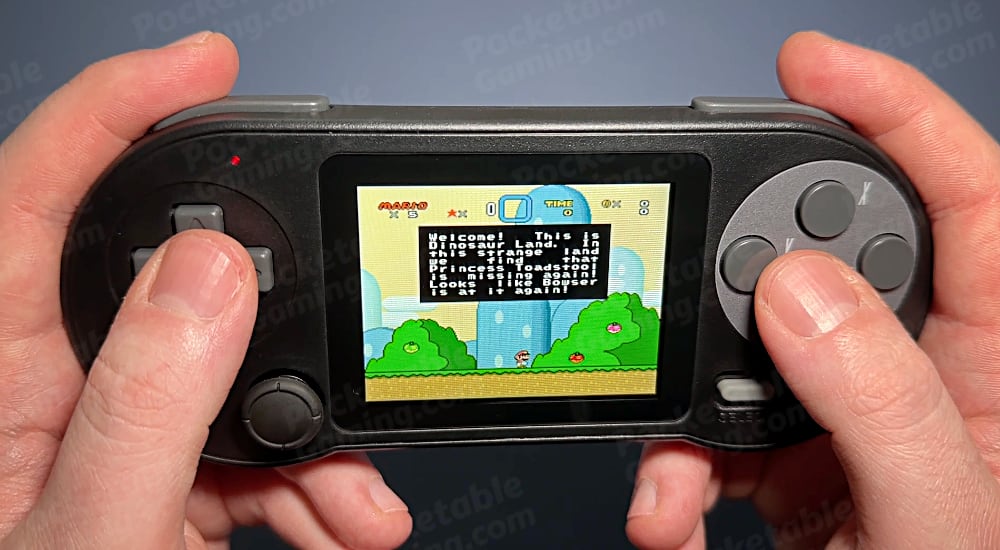
The display has a resolution of 320×240 (which actually is a rotated 240×320 screen) with a non OCA laminated IPS panel. This means there will be a small gap between the protective plastic and the display itself.
If you’re used to higher resolution screens this will most likely be notable. However, with its intended use of playing retro games – these looks fine and might actually make them look and feel more like they used to back in the day.
When you put the display in perspective to the price point I will most definitely say it’s very capable.
With that said, it does have some issues:
First, there is no way to adjust the brightness. If you have a significant other, forget about playing in bed before sleep as the screen is rather bright.
Secondly, as of this writing, there is noticeable screen tearing. However, there are some members of the retro gaming community working on a software fix for this.
Software
The SF2000 uses Libretro with a simple custom user interface. Let’s be honest, if you like to delve into tweaks and deep configurations – this might not be a retro handheld for you.
The software has its flaws but I still find it intuitive, easy to use and navigate. It’s not snappy as a more expensive device would be but it gets the job done.
You navigate between systems by pressing up or down and the start-button selects a system and displays a list of games. There’s also four shortcuts on the system view for quick access to certain games (these ca be modified with a tool called Tadpole, continue reading for more information).
To start game, select the game in the games list and press the start-button. To exit a menu, press the select-button, it’s as simple as that.
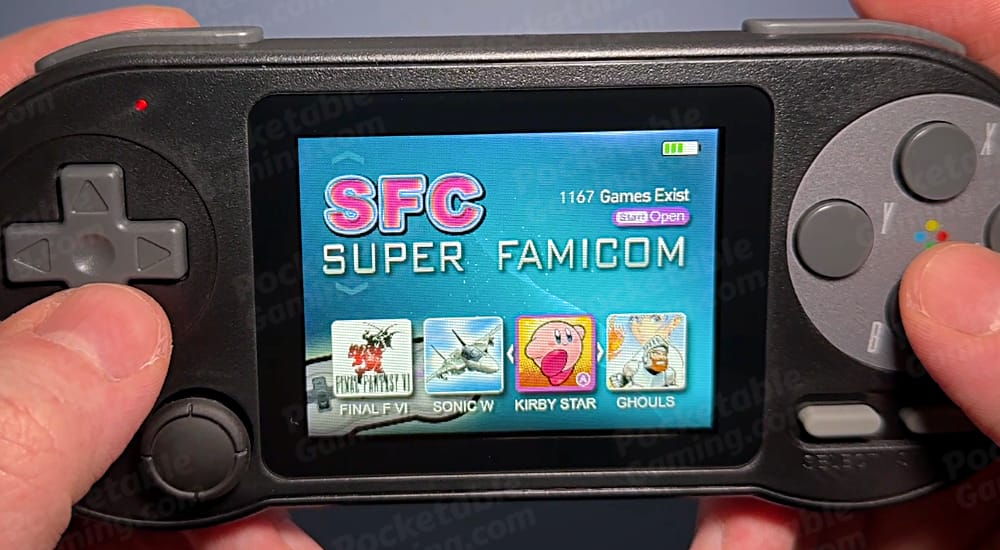
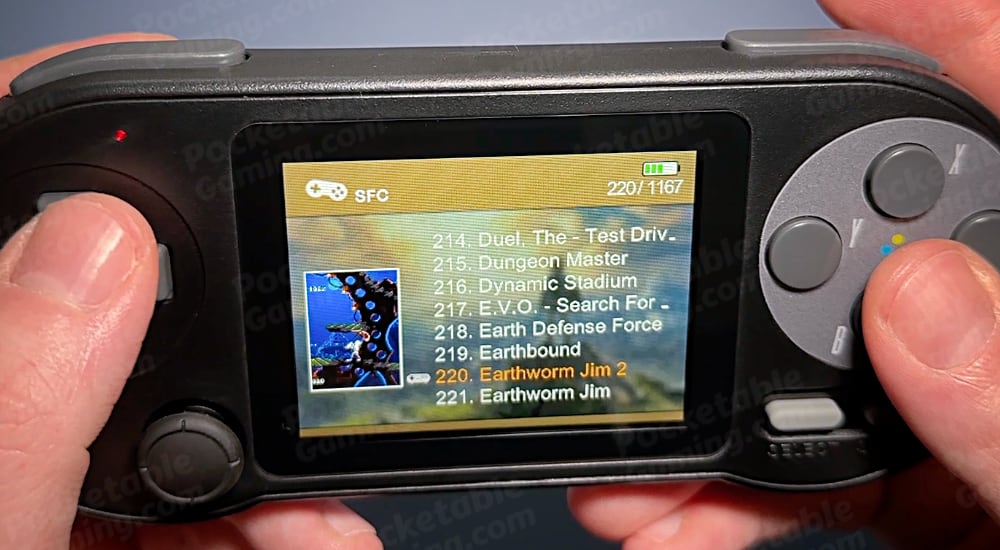
The software includes save- and load state functionality which can be access by pressing the start and select button at the same time while playing a game. This is also how you’ll pause the emulation and quit out to the main software.
As mentioned before: the software is very basic.
There is a user settings-tab which includes: Game list, Favorites, History, Search, Key mapping, Language and the ability to change tv system between NTSC and PAL.
Known software issues
There are a couple of issues with the SF2000 out-of-the-box which can be fixed with a tool called Tadpole. This is a community-made tool for managing the Data Frog SF2000 by applying various fixes, changing themes, managing rom lists, updating the firmware and more.
The most important issue to fix with Tadpole before usage is the bootloader bug. If left alone, the device might get stuck on a infinite black screen and become non-playable (if you’re affected by this bug already, this tool can also help you fix it).
I also recommend applying the GBA bios fix and patch the battery monitoring curve which greatly approves the accuracy of the battery indicator.
Lastly, update the software to the latest stock firmware.
Emulation
The Data Frog SF2000 is being advertised to be able to emulate up to SNES and GBA. While most of these games run, they’re not running at full speed except for some.
In my testings I would pretty much always find the slow speed noticeable on these two systems. Sure, some works better than others but in the end: these will probably never run at full speed on a CPU like this.
Game Boy, Game Boy Color and NES works good but the real winner here is Sega Genesis.
I would argue that Sega Genesis runs almost perfect on this device. It looks great, feels great and plays great. I’m even willing to recommend this device solely on its Sega Genesis emulation capability, despite looking like a SNES controller.
One thing to note is that all systems will be forced to run in fullscreen which I think is OK for this kind of device. I would, however, preferred to have the ability to select native aspect ratios.
Use cases
I think the ultimate use cases for this device is to either use it as a “beater” handheld yourself or gift it to kids and/or friends.
Wouldn’t it be nice to have a device you’re not that afraid of damaging? Just throw it in your bag or backpack and get on with your day. This device is so cheap that you can easily get it replaced if it breaks. I’m not saying that’s something you should strive for, more of like a change in mentality-way where you don’t need to baby it.
I would also see this as a perfect gift for kids: it’s cheap, pretty durable and I think sufficiently intuitive for a kid to navigate and use.
Conclusion
I’m impressed by the overall build quality of the device at this price point. For the same price as a lunch (pretty much) you’ll get a handheld which can emulate some of the best retro games ever made. Especially if you’re a fan of Sega Genesis, which the Data Frog SF2000 emulates almost perfectly.
The hardware in terms of buttons and the screen is far better than I thought it would be.
My biggest complaint is that its software is flawed right out-of-the-box. You will need to apply some fixes using a tool to make it stable and not worrying about it getting stuck at a black screen.
Lastly, I think this makes for a great gift to friends or a kids first retro gaming handheld.
Data Frog SF2000
Price: $15
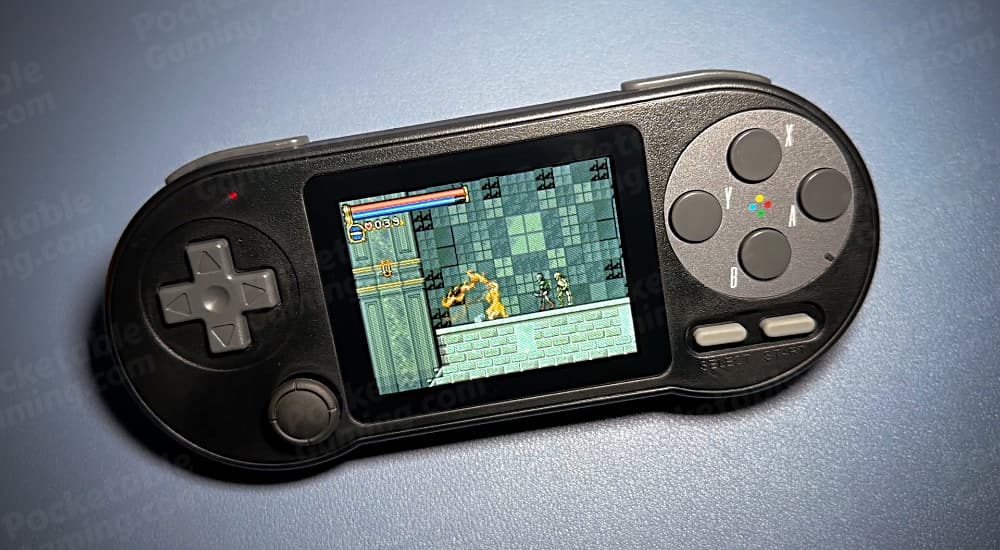
2.5/5
Pocketability: Average
+ Pros
- Dirt cheap
- Sturdy for its price
- Great as a gift
– Cons
- Needs important fixes
- Varied emulation capability
- No over discharge protection
If you like this article, please leave a comment or consider following us on our social media-platforms for more retro handheld gaming content.


